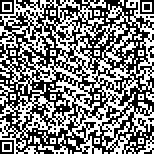张心培,张丽,张元鸣飞,等.运用弹性超声动态测量不同肌张力下肌肉硬度的初步研究[J].中华物理医学与康复杂志,2023,45(1):29-34
扫码阅读全文

|
| 运用弹性超声动态测量不同肌张力下肌肉硬度的初步研究 |
|
| |
| DOI:10.3760/cma.j.issn.0254-1424.2023.01.006 |
| 中文关键词: 肌张力 剪切波弹性成像 杨氏模量 改良Ashworth量表 |
| 英文关键词: Muscle tonus Elastic ultrasound imaging Shear wave elastography Young′s modulus Modified Ashworth scale |
| 基金项目: |
|
| 摘要点击次数: 5235 |
| 全文下载次数: 6247 |
| 中文摘要: |
| 目的 运用剪切波弹性成像(SWE)技术测定肱二头肌在被动牵伸过程中的杨氏模量变化,初步探索SWE测量肌肉硬度辅助肌张力定量评定的潜力。 方法 对49例脑卒中患者及30例健康受试者行双侧肘屈肌肌张力MAS评定,根据MAS分级结果分为健康受试者组、患者健侧组、MAS 0级组、1级组及1+级组。在受试者肘关节被动匀速伸直过程中,留取肱二头肌的实时剪切波弹性成像录像,并读取杨氏模量数据。选取6个肘关节位置点,记录各位置点处的瞬时杨氏模量(EX)、计算各位置点较运动起始处的杨氏模量变化值(ΔE),分别评估EX和ΔE与MAS分级的相关性以及组间差异。 结果 MAS分级越高,肱二头肌杨氏模量越高,并且在肘关节伸直角度增加时其杨氏模量值增加越明显。在1/2关节活动范围(ROM)至全ROM之间可观察到EX及ΔE在MAS 0级与MAS 1级、MAS 0级与MAS 1+级之间的差异有统计学意义(P<0.05),但MAS 1级与MAS 1+级之间在各个位置点的差异均无统计学意义(P>0.05)。 结论 利用剪切波弹性超声在运动过程中定量、实时测量肌肉硬度与MAS分级有一定的相关性。 |
| 英文摘要: |
| Objective To measure the change in Young′s modulus of the biceps brachii during passive stretching and to assess the potential of shear wave elastography (SWE) as an auxiliary quantitative technique for assessing muscle tone. Methods Forty-nine stroke survivors and 30 healthy subjects were evaluated using the modified Ashworth scale (MAS). According to their MAS scores they were divided into a healthy group, a healthy elbow group, an MAS class-0 group, an MAS class-1 group, an MAS class-1+ group and an MAS class-2 group. During passive extension of the subjects′ elbows, shear wave elastography was used to image the biceps brachii. Six points of the elbow were selected to record the instantaneous Young′s modulus (EX) and calculate its change during the movement (ΔE). Those data were correlated with the MAS scores and compared among the groups. Results Persons with higher MAS scores tended to have a higher Young′s modulus of the biceps brachii, and the modulus was likely to increase more with increases in the angle of elbow extension. From half of the range of motion to full extension there were significant differences in EX and ΔE between MAS class-0 and class-1 groups, as well as between the class-0 and class-1+ groups. There were, however, no significant differences between MAS class-1 and MAS class-1+. Conclusions MAS scores can usefully predict biceps brachii stiffness during passive elbow flexion. Shear wave elastography can quantify that stiffness and also muscle tone. |
|
查看全文
查看/发表评论 下载PDF阅读器 |
| 关闭 |